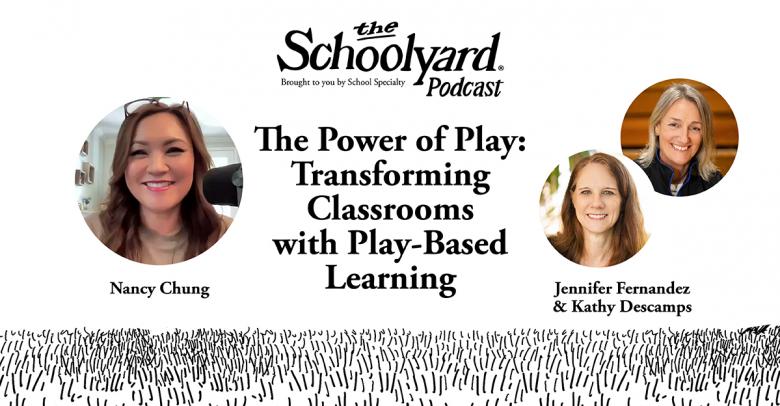Resources on family engagement in early childhood education seem to have a recurring theme: One size does not fit all. Current research on the topic sheds light on why this is true and why educators must take this to heart.
First, to be successful at family engagement, one needs to understand what it really means. Many people, upon hearing the term, immediately think of parent/teacher conferences, parents volunteering at holiday gatherings, or families sending back the “All about Me” poster they helped create with their child. However, this is a very narrow view of what family engagement encompasses. Start Early, a nonprofit public-private partnership advocating for early childhood, defines family engagement quite succinctly: “…family engagement focuses on the importance of positive, interactive relationships between program staff and parents – relationships that enhance and support children’s learning.” Taking that definition a step further, WIDA, in their paper ABCs of Family Engagement, says those relationships should be ongoing throughout a child’s educational journey, mutual, built on trust and respect, and focused on student learning and achievement.
Second, in addition to understanding what family engagement is, one must know the benefits. All sources echo the same key outcomes: improved learning and achievement, reduction in behavioral challenges, increased attendance, and enhanced parent and student satisfaction with schools. These results help us understand the importance and impact of getting family engagement right.
Unfortunately, educators often have a very limited view of family engagement. Sending appointment messages home about parent conferences means they are doing their part. Allowing some parents to organize a holiday celebration or school event means they can check a box. Sending home a weekly newsletter qualifies as communicating with parents. Sadly, they are missing the mark. These examples are what the research calls traditional forms of engagement: expecting parents to follow the teacher’s or school’s agenda for supporting their children’s learning at home.
Therefore, the first thing an educator must do is reflect on his or her own beliefs about how families should support their children’s education. Basing one’s own definition of family engagement solely on what is was like for the teacher when he or she went to school, does not mean that represents what family engagement is or should be like for the families whom he or she is currently serving. Thus, educators must work to understand the experiences and perspectives of the families they work with each day. One way to do this can be by making home visits. Going into a child’s home environment firsthand is the perfect way to learn about families. From their backgrounds, strengths, and challenges to their culture, language, and lifestyle, a personal visit provides great insight into each family in a school community.
Next, teachers must strive to extend on what they learn about families as a foundation for two-way communication. Many educators get in a rut of one-way communication—sending home newsletters, notes, progress reports, etc. They feel they have briefed families about their child’s education. While providing that information is a key part of family engagement, it must be given in a comprehensible format and be connected to learning to constitute a best practice. Additionally, school personnel must be conscientious about communicating with parents in their native language. Awareness and acceptance that families play a primary role in children’s learning and development is of utmost importance for the well-being of every child. Therefore, ensuring that families understand the content being communicated to them is a must.
In addition to the fact that families are children’s first and most important teachers, educators must uphold the rights of parents to make decisions for their children. I struggled with this one early on in my own teaching career. I am bilingual in English and Spanish, have a master’s degree in bilingual education, and have worked hard to make my own children bilingual given the fact my husband and his family are native Spanish speakers. As a teacher in my school’s bilingual program, I often got on my soap box to convince reluctant parents of the benefits of bilingualism as they leaned toward enrolling their child in an English-only program. Finally, I realized my job was to share my knowledge on the topic, but in the end, I was not the child’s parent nor did I get to decide what program they participated in at school. Ultimately, it was their choice and I had to be satisfied with the fact that I had properly informed them of their options.
What did come from these conversations about choosing a program for their child, was a realization of how important a trusting relationship is with families. Being able to develop trust and respect with a family means they are more willing to listen to information or recommendations from teachers and other school personnel. Developing a partnership—a key piece for successful family engagement—where families and educators work together toward the common goal of seeking what was best for the child is the ultimate goal.
Finally, educators cannot get stuck on the path of traditional involvement of families, but rather, need to be open to nontraditional forms of engagement. For example, family engagement also needs to be about empowering families with knowledge and skills. Many families avoid school because of negative past experiences or because they do not understand the language and culture of the school community. Providing families with a safe, comfortable space within a school can help overcome these barriers to involvement. For example, a past employer set up a “Parent Café” in each of their early childhood centers. Not only was it an inviting spot in the school, but there were also resources available to parents such as computers and parenting literature. When parents feel welcome and have a place to network with other families, schools are showing parents they are advocating for them and their children.
Schools must provide opportunities for parents to be champions for their children. They must work with families to plan engagement options that match their needs and preferences. An educator’s job in supporting family engagement is giving families the tools to navigate school and embracing their participation in whatever form it comes. Remember, one size does not fit all. When this mentality is adopted, not only are families supported, but the children served are supported and set on the path to educational success.
Jennifer Fernandez
Jennifer has over 30 years of experience in education. She has degrees in Elementary Education, Spanish, and Bilingual Education and holds teaching licenses in Texas and Minnesota. She has taught PreK-2nd grade in general and bilingual settings, served as a professional learning specialist for seven years, and currently presents at state and national conferences.
Read more by Jennifer Fernandez–>







Leave a Reply